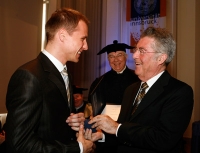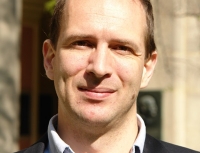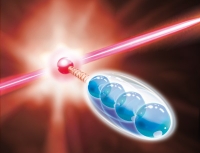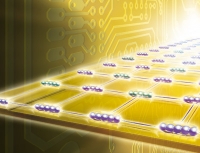
[2011-03-18] Scientists of the IQOQI in Innsbruck, Austria, have reached a milestone in the exploration of quantum gas mixtures. In an international first, the research group led by Rudolf Grimm and Florian Schreck has succeeded in producing controlled strong interactions between two fermionic elements - lithium-6 and potassium-40. This model system not only promises to provide new insights into solid-state physics but also shows intriguing analogies to the primordial substance right after the Big Bang.

[2011-03-10] Als einer von sechs Doktorandinnen und Doktoranden der Universität Innsbruck wurde Gerhard Kirchmair am 10. März 2011 im Beisein von Bundespräsident Dr. Heinz Fischer promoviert. Eine „Promotio sub auspiciis Praesidentis rei publicae“ ist die höchstmögliche Auszeichnung von Studienleistungen in Österreich.

[2011-03-03] Die internationale Gruppe um Frank Verstraete, assoziiertes Mitglied des IQOQI, präsentiert in der aktuellen Ausgabe von "Nature" einen neuartigen Quanten-Algorithmus. Angewendet von einem künftigen Quantencomputer hätte diese Methode enormes Potenzial, neue Einblicke in fundamentale Zusammenhänge der Chemie, der Materialphysik oder der Hochenergiephysik zu gewähren.

[2011-02-23] Experimental physicists have put a lot of effort in isolating sensitive measurements from the disruptive influences of the environment. In an international first, Austrian quantum physicists have realized a toolbox of elementary building blocks for an open-system quantum simulator, where a controlled coupling to an environment is used in a beneficial way. This offers novel prospects for studying the behavior of highly complex quantum systems. The researchers have published their work in the scientific journal Nature.
Read more …Quantum simulator becomes accessible to the world

[2011-02-23] The Austrian research group led by physicist Rainer Blatt suggests a fundamentally novel architecture for quantum computation. They have experimentally demonstrated quantum antennae, which enable the exchange of quantum information between two separate memory cells located on a computer chip. This offers new opportunities to build practical quantum computers. The researchers have published their work in the scientific journal Nature.